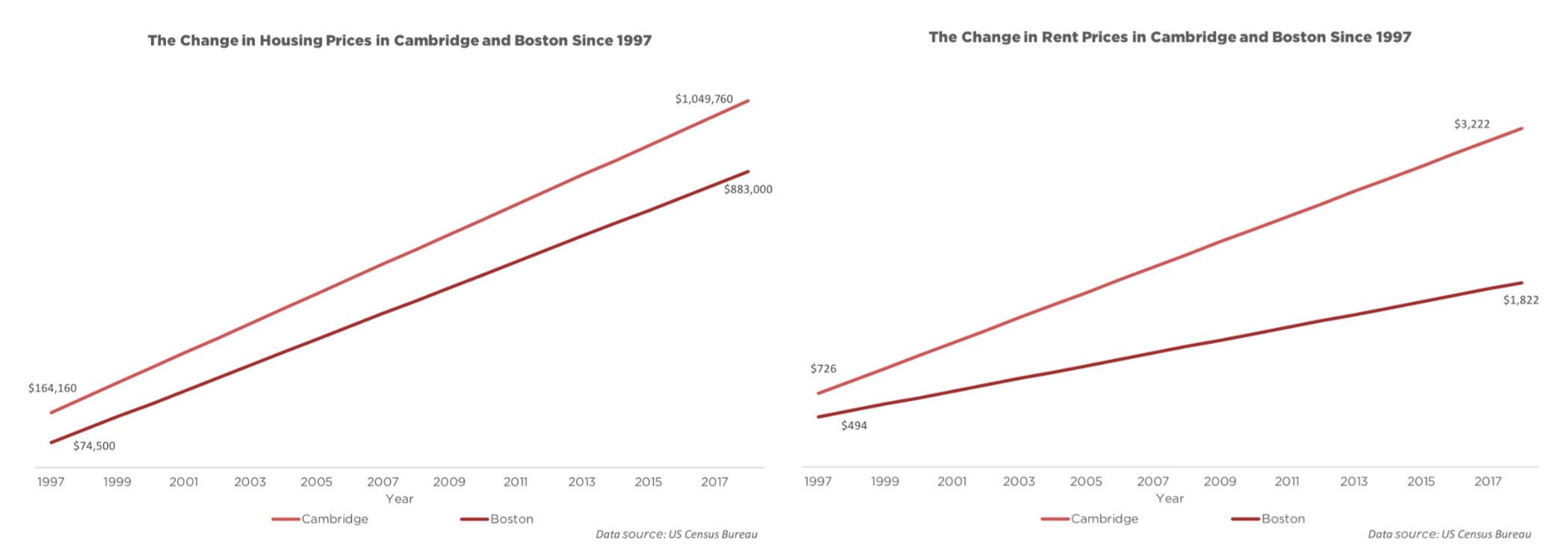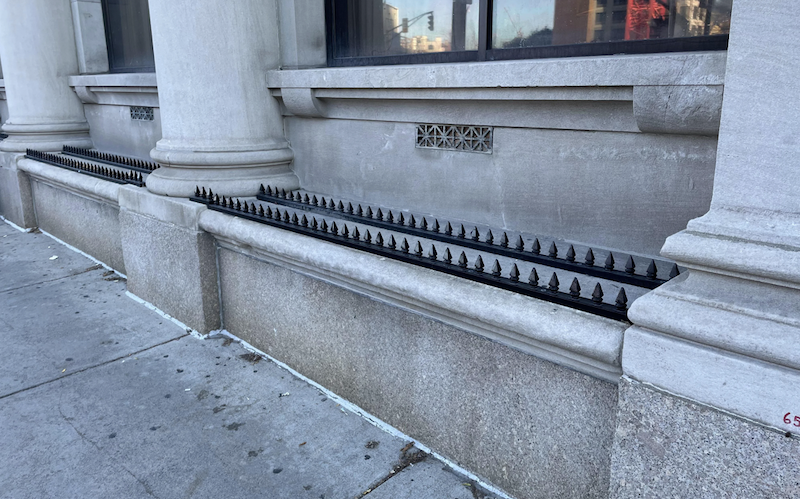Architecture of Banishment
Date published: June 3, 2022Berklee College of Music owns more than 100 acres of real estate in the center of the city of Boston. The land Berklee owns along with the structures built upon it are collectively valued at $261 million. Every year Berklee attracts thousands of transplants (students, faculty, and other staff) into the Boston area, transplants who are, on average, wealthier and whiter than residents already living in the Boston area communities they move into. By gobbling up real estate and fueling this deluge of transplants into local housing markets, Berklee College of Music contributes considerably to the ongoing rise in housing, rental, and living costs in the Boston area (see image below), which is rapidly displacing Black and Brown working class residents no longer able to afford to live in the neighborhoods they have called home for years if not decades ("gentrification").

In addition to displacing community members by fueling the rise in local housing, rental, and living costs, Berklee College of Music has taken grotesque steps to prevent these displaced community members from so much as being physically present in spaces they once called home, which the campus occupies. In 2018, Berklee installed what have been called "homeless spikes" upon the ledge of one of its buildings on the corner of Massachusetts Ave and Boylston St, in an effort to prevent unhoused community members from being able sit or lie down upon the building's ledge (see image below). A petition calling for the removal of the "homeless spikes" notes: "This ledge is known as a traditional spot for several homeless people, so the spikes are clearly designed to deter the homeless from congregating there."

Displacement (or "gentrification") is often incorrectly conceptualized as an unintentional consequence of inevitable transformations which occur in urban areas over time. Berklee's "homeless spikes" are a stark reminder of the intentionality behind the efforts of local universities and tech, biotech, and pharmaceutical corporations to reshape the Boston area into a haven for majority white and professional populations, through the planned banishment of preexisting (Black and Brown, working class) communities deemed undesirable. University and corporate giants like Berklee College of Music not only dispossess pre-existing, majority Black and Brown and working class community members of their homes and neighborhoods, but also work to prevent these displaced community members from returning even transiently to these spaces--a process violently enforced by Boston's countless city and university police forces which exist to serve and protect university and corporate interests.
Furthermore, Berklee's "homeless spikes" drive home the intimate connection between displacement ("gentrification") and colonialism. How different are Berklee's "homeless spikes," implemented to prevent the return to spaces Berklee now controls of community members it deems undesirable, from Israel's Nationality and Entry into Israel Law, implemented to prevent the return of Palestinian refugees deemed undesirable to what Israel refers to as its "demographic balance" (i.e., the ratio of Jewish people to Palestinian people)? How different are Berklee's "homeless spikes" from the constant harassment members of the Mashpee Wampanoag Tribe have faced from white settlers in Tauton, MA over recent years for attempting to return to fish in the waters their ancestors have fished in for millennia?
Indeed, the fact that Berklee College of Music and other Boston area university and corporate behemoths like it are so consistently and so heavily invested in both colonization and displacement calls into question just how functionally separate these two systems of structural violence are from one another. Perhaps it is no accident that community members displaced from the historically Black Boston neighborhood of Roxbury have recently borrowed a phrase from the Palestinian struggle by declaring their "right to return" to Roxbury.